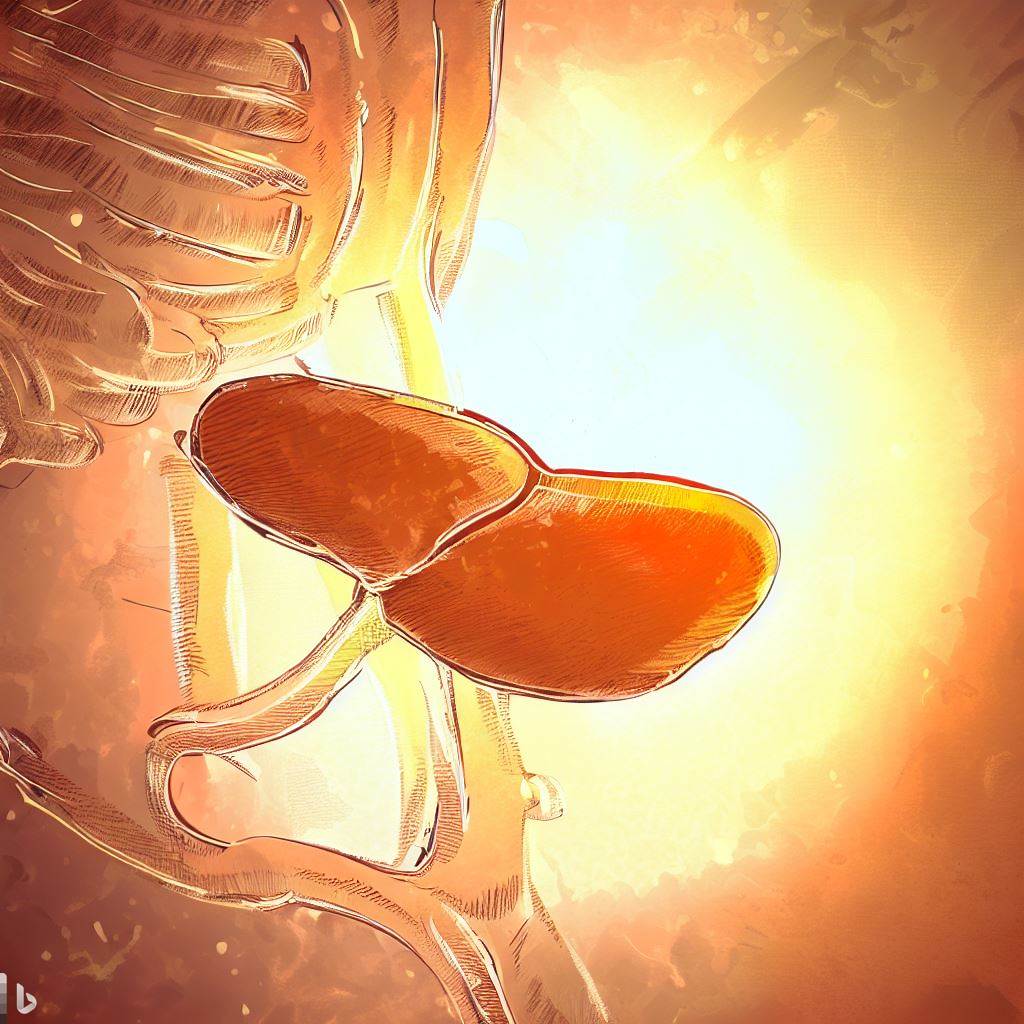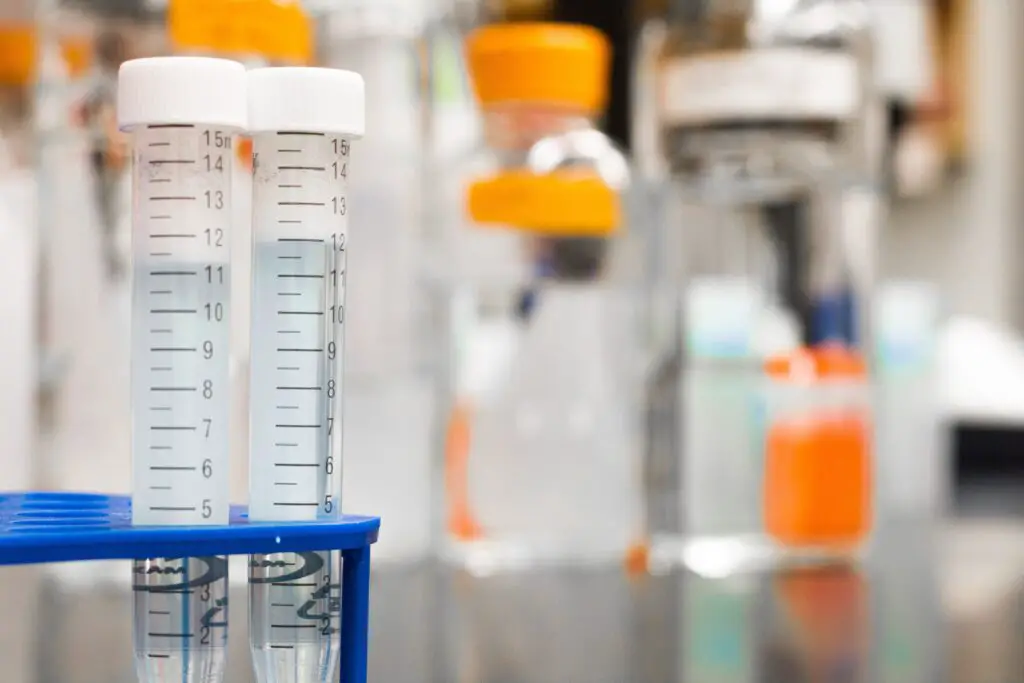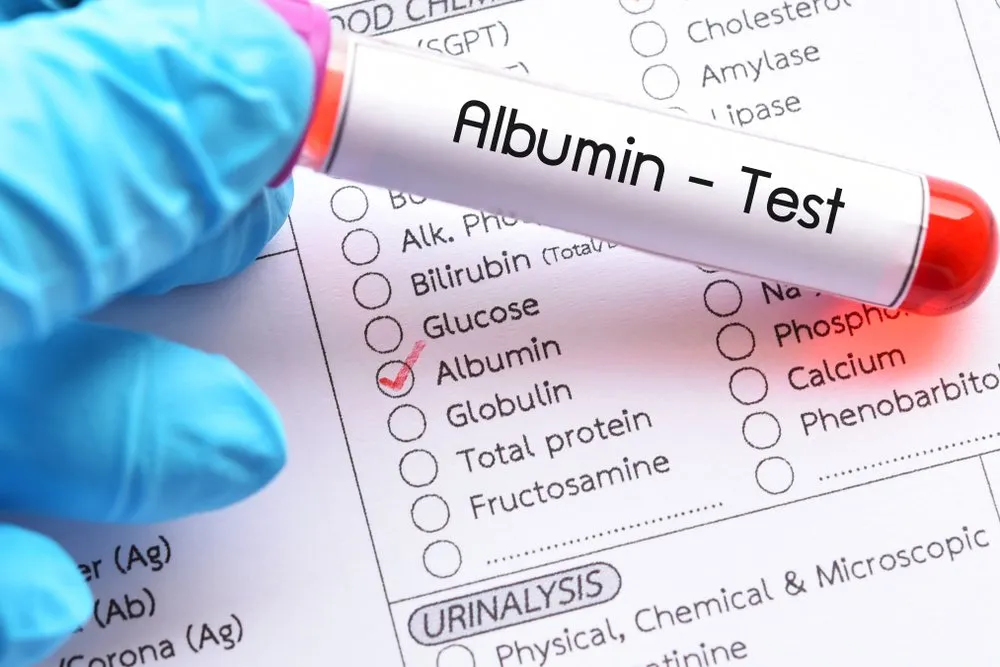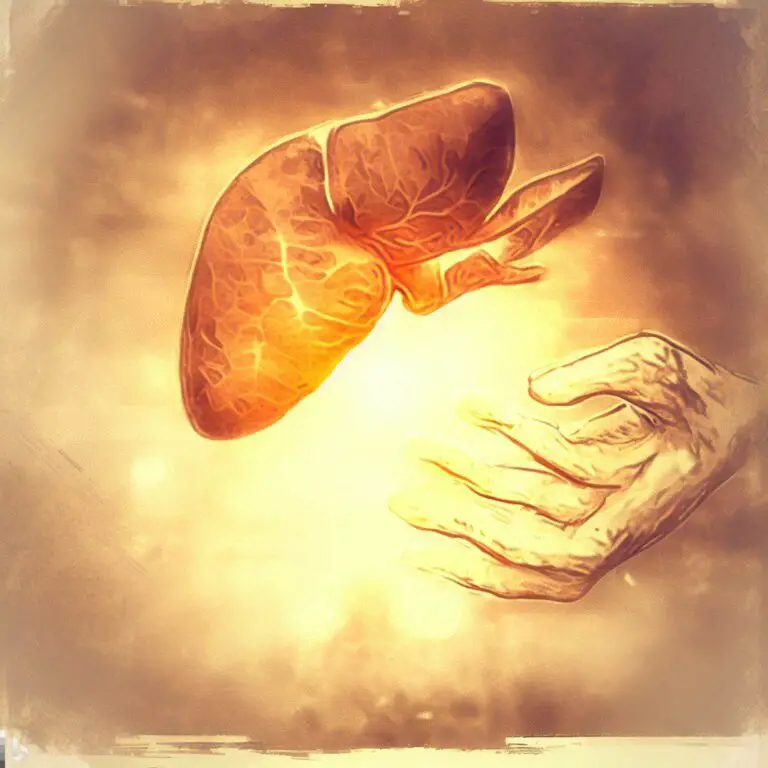Introduction
The liver is one of the most important organs, not only because it effectively detoxifies the body from toxins, but also because it has a much broader range of functions. The symptoms that appear when the liver ceases to function properly indicate how much it is involved in life processes.
I expect that some signs of liver dysfunction that I will mention may come as a surprise to some of you, so I encourage you to read this article to the end. Finally, I will also explain what tests to perform to preliminarily assess the condition of your liver.

Bilirubin – An unknown compound of great importance
I’ll start with the most well-known symptom, or rather a group of several different signs that indicate something is wrong with our liver. Of course, I’m referring to jaundice.
During jaundice, we primarily observe a yellow-brown discoloration of the skin, as well as yellowing of the whites of the eyes and mucous membranes.
This is caused by the deposition of bilirubin in various tissues.
For those not familiar with bilirubin, in simplified terms, it is a yellow pigment released as a result of the natural breakdown of red blood cells, or erythrocytes. It’s important to know that the liver captures excess bilirubin from the blood and then transforms it into other components. It transports it through the bile ducts to the digestive tract, where it is excreted with feces. This is what happens when our liver is functioning properly.
However, if the liver is damaged, it fails to process bilirubin effectively. One of the effects is the accumulation of bilirubin in tissues and the yellowing of the skin. However, if the liver stops transmitting bilirubin to the digestive tract, it will not color the stool. As a result, during jaundice, we observe pale-colored stools.
At the same time, when bilirubin accumulates in the blood, its excess is eliminated through urine, which can cause discoloration of urine. Therefore, darkening of urine is another sign of jaundice.
Jaundice can be caused by a variety of liver diseases, primarily including liver cirrhosis, viral hepatitis, autoimmune hepatitis, biliary tract inflammation, and liver tumors. Jaundice can also occur as a result of liver damage caused by drug overdose, alcohol abuse, or mushroom poisoning.
As a side note, without going into further detail, it’s worth mentioning that jaundice can also be caused by other unrelated health issues.
When discussing symptoms of a diseased liver, it’s also important to note that, for example, liver cirrhosis is often accompanied by general weakness or even chronic fatigue and increased tiredness.

Moreover, in the case of the mentioned disease, fatigue is sometimes the only symptom for a long time. I would like to add that fatigue can have a significant impact on our quality of life, making it difficult to perform professional work, engage in sports, or even pursue our hobbies.
I realize that fatigue is not a very specific symptom that can be attributed to many other health problems. However, if it appears, it is worth paying attention to whether it is accompanied by other signs that I am discussing today.
In individuals with liver cirrhosis, malnutrition is also frequently observed.
All this applies to me, PLUS – I’m losing appetite…
In addition to fatigue, I mean loss of appetite, as well as uncontrolled and unintentional weight loss.
This is caused, among other factors, by the presence of hypermetabolism, which means an acceleration of the basal metabolic rate, in some patients with the mentioned disease.
Furthermore, when the liver is insufficient, it fails to properly process the nutrients provided with food, including fats, proteins, and carbohydrates. This, combined with the accompanying inflammatory state, leads to increased breakdown of body proteins, known as catabolism.
I would like to add immediately that disturbances in the metabolism of these mentioned nutrients can also cause symptoms related to the digestive tract.

In addition to the loss of appetite, these include diarrhea, bloating, a feeling of heaviness in the upper abdomen after meals, nausea, and vomiting.
Often underestimated pain
I would also like to mention that during liver disease, pain may occur in the area below the rib cage, usually on the right side of the body.
However, I must emphasize that the liver itself does not feel pain because it is not innervated by sensory nerves.
The perceived pain is caused by the enlargement of the liver, which puts pressure on the surrounding tissues, including the liver capsule.
During liver disease, especially in the case of cirrhosis, there can also be a change in the appearance of our body silhouette. I’m referring to the appearance of what is called “chestnut man.” This refers to a situation where our arms and legs become slimmer due to muscle loss, while there is an increase in abdominal circumference caused by liver enlargement, which is professionally referred to as hepatomegaly.
Enlargement of the liver – when the situation becomes serious
Liver enlargement can result from various factors, including ongoing inflammatory conditions, bile stasis in the liver, and, in extreme cases, the presence of tumors. In addition to liver cirrhosis, which can cause liver enlargement and increased abdominal volume, it can also occur due to conditions such as viral hepatitis (types A, B, or C), liver steatosis (fatty liver), or drug-induced hepatitis caused by medications like statins and paracetamol.
It should be noted that liver enlargement can also occur due to other problems unrelated to the liver itself. This includes conditions such as right-sided heart failure or hepatic vein thrombosis, which cause bile stasis in the organ.
Experiencing nosebleeds and skin irritations from an unknown source?
Speaking of appearance, I must also mention that besides the aforementioned jaundice discussed at the beginning of the article, there can be other visible changes in the skin.
To understand this aspect, it’s important to know that the liver plays a crucial role in producing blood clotting factors. Therefore, when it stops functioning properly, there is a decrease in the concentration of clotting factors in the blood. As a result, patients with liver diseases may experience spontaneous nosebleeds and gum bleeding. Additionally, they tend to develop bruises easily.
Furthermore, a condition known as “spider angioma” or “spider nevi” may appear, which is enlarged and bursting superficial blood vessels on the skin. They typically have a star-like shape, with red dot-like elevations from which branching lines radiate. These changes are most commonly observed in the upper part of the chest, but they can also appear on the face and upper limbs.
Among the vascular changes visible on the skin in the course of liver cirrhosis, we should also mention the so-called “caput medusae.” This refers to the appearance of enlarged veins in the area around the navel, somewhat resembling the mythological Medusa, who had snakes instead of hair on her head.

Palmar Erythema
Additionally, in the course of liver cirrhosis, we often encounter a condition called “palmar erythema” and “plantar erythema,” which refers to redness of the palms or the soles of the feet.
Skin changes accompanying liver diseases, especially cholestasis, which is the stagnation of bile, also include persistent itching of the skin. It’s worth noting that it can occur at various stages of liver disease, often in the early phases.
It is quite characteristic that the itching intensifies during the nighttime when the skin is warmed. Typically, this problem affects the skin of the hands and feet.
As a result of the itching, there are often scratch marks, which are skin abrasions that occur due to continuous scratching.
The Connection Between Liver Disease and Hormonal Problems
The liver plays a crucial role in maintaining hormonal balance within the body. Liver disease can disrupt this delicate equilibrium and lead to hormonal imbalances.
The liver is responsible for metabolizing hormones, including estrogen, testosterone, and thyroid hormones, as well as producing proteins that transport these hormones throughout the body.
When the liver is compromised, such as in cases of liver cirrhosis or hepatitis, its ability to regulate hormone levels is affected.
This can result in a range of hormonal problems, including menstrual irregularities, infertility, decreased libido, and even the development of secondary sexual characteristics.
Understanding the connection between liver disease and hormonal issues is important for managing and treating both conditions effectively.
In other words – liver is involved in processing sex hormones, including estrogen (the female hormone) and testosterone (the male hormone), and in the course of liver cirrhosis, the balance between these hormones is disrupted.
As a result, men often experience gynecomastia, which is the enlargement of breast glands.
Additionally, these hormonal imbalances can be accompanied by changes in body hair. In men, we observe hair loss in areas such as the armpits, chest, and genital region, while women may experience excessive hair growth on the face and forearms.

When the liver is not functioning properly, it can also leave a mark on our nails.
Scientific literature states that in the course of liver cirrhosis, a condition called Terry’s nails may appear.
This change involves a significant portion of the nail plate turning white, while a narrow pink strip is observed at the distal end, or the very tip, of the nail.
I found information stating that Terry’s nails occur in up to 80% of individuals struggling with the mentioned disease. And as many of you are probably well aware, the liver is the most important detoxifying organ, and if liver failure develops, it weakens the body’s processes of eliminating various toxic substances.

As a consequence, various neurotoxic substances start to accumulate in the body, which can penetrate the central nervous system and cause neurologic and psychiatric disorders. This can result in a range of different symptoms. I’m referring to disturbances in concentration, memory, and attention, mood changes, irritability, anxiety, restlessness, anxious reactions, uncontrollable anger, reversal of sleep-wake cycle, and muscle tremors.

Keep your health in check
Now I will briefly explain to you which tests are best to perform initially if we want to assess the functioning and condition of our liver. The basis is the measurement of liver function tests, which involve the activity of two enzymes present in the liver.
I’m referring to alanine aminotransferase, abbreviated as ALT, and aspartate aminotransferase, or AST. Elevated liver function tests can indicate primarily viral hepatitis, as well as hepatitis caused by alcohol or an excessive immune response.
Additionally, an increase in liver function tests is observed in cases of poisoning and liver damage caused by hepatotoxic substances, including drug abuse, for example. Sometimes elevated liver function tests indicate fatty liver disease.
However, I must emphasize that in certain liver diseases, liver function tests may be within normal range. Another enzyme whose activity can be assessed is alkaline phosphatase, abbreviated as ALP. Its elevated levels are observed, among others, in liver diseases associated with bile stasis, such as bile duct inflammation or viral hepatitis.
However, it is important to know that high alkaline phosphatase levels can also be caused by bone diseases. Therefore, if we want to assess liver health, this test is performed as an additional one, not the only one.
If we suspect liver problems in ourselves, it is also good to measure the bilirubin level, which I mentioned at the beginning of the article. Elevated bilirubin levels in the blood may indicate viral hepatitis, liver cancer, as well as liver cirrhosis. Very often, increased bilirubin is also observed in diseases of the biliary tract, such as bile duct stones or inflammation of the bile ducts.

Blood Clotting Efficiency
You may remember, as I mentioned before, that the liver produces clotting factors and is responsible for proper blood clotting.
However, when it becomes inadequate, spontaneous bleeding can occur, which also reflects in laboratory test results.
I’m referring specifically to the measurement of the so-called prothrombin time, which is the time required for proper plasma clotting.
When the result is elevated, indicating a prolonged prothrombin time, it signifies delayed blood clotting.
And such a situation can be encountered in the course of liver dysfunction.

Albumines: One of the many key factors to our overall well-being
Albumin is a protein found in the blood and plays a crucial role in maintaining our overall health and well-being. Its significance cannot be overstated, as it serves various essential functions within the body.
First and foremost, albumin functions as a carrier molecule, transporting hormones, fatty acids, medications, and other substances throughout the bloodstream. This ensures that these vital compounds reach their intended destinations and can perform their respective roles effectively.
Additionally, albumin helps regulate the osmotic pressure in blood vessels, preventing excessive fluid leakage into tissues. This helps maintain proper blood volume and prevents the occurrence of edema or swelling.
Albumin is also involved in the maintenance of pH balance in the body, contributing to the stability of bodily fluids. It aids in buffering the blood, ensuring that it remains within the optimal pH range for normal physiological processes to occur.
Furthermore, albumin plays a crucial role in preserving the body’s nutritional status. It acts as a reservoir of amino acids, which are the building blocks of proteins. During periods of fasting or malnutrition, albumin releases amino acids to provide a source of energy and support various bodily functions.
In the context of medical diagnostics, albumin levels are frequently measured to assess liver and kidney function, as well as nutritional status. Abnormal albumin levels can indicate underlying health issues and guide healthcare professionals in determining appropriate treatment strategies.
How does the above refers to the previous part? It’s very simple.
You may remember that I wrote about how the liver produces clotting factors and is responsible for proper blood clotting. However, when it becomes dysfunctional, spontaneous bleeding can occur, which also affects laboratory test results.
I am referring to the measurement of a parameter known as prothrombin time, which indicates the time required for plasma to clot properly. If the result is elevated, meaning that the prothrombin time is prolonged, it indicates delayed blood clotting. This situation is often observed in cases of liver failure.

Final Words
In any case, when the liver is not functioning properly, as you may already suspect, it produces fewer albumins, leading to a decrease in their concentration in the blood. Therefore, if we measure the level of albumin in the blood and it falls below the normal range, it may indicate liver diseases such as cirrhosis or damage caused by toxic substances.
If the test results mentioned earlier deviate from the norm, further imaging tests are conducted, including liver ultrasound (USG), and even histopathological examinations involving liver tissue sampling, which refers to liver biopsy.
However, in the first instance, it is essential to perform blood tests that I mentioned to you.
Additional knowledge – video
Additional knowledge – reading:
https://www.thelancet.com/journals/langas/article/PIIS2468-1253(23)00010-9/fulltext
A note from our team ❤
Take care and live a happy life 😉❤




Comments are closed.